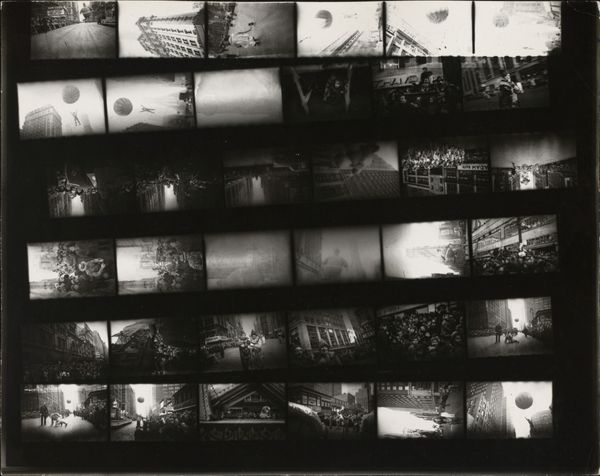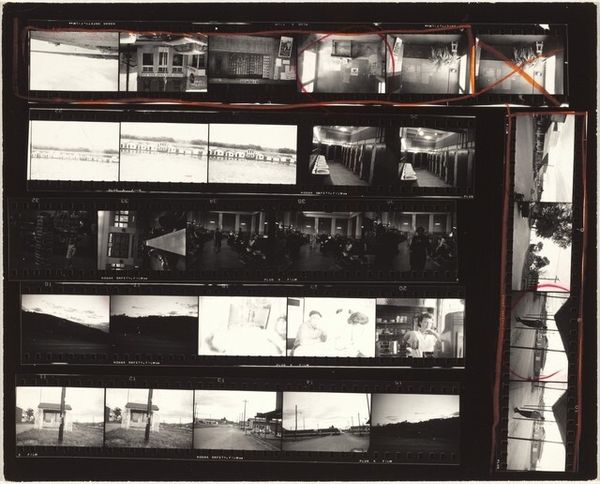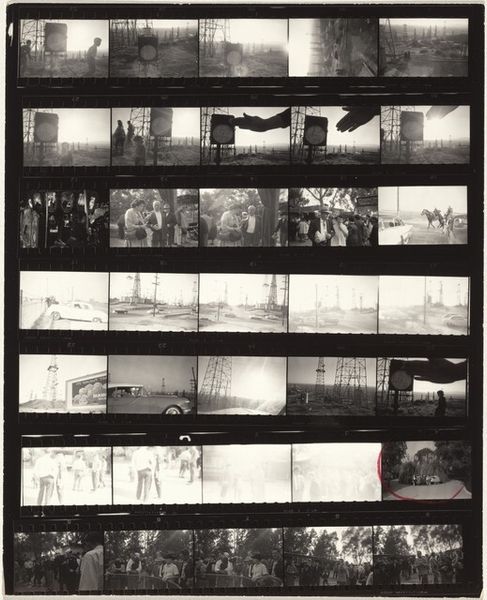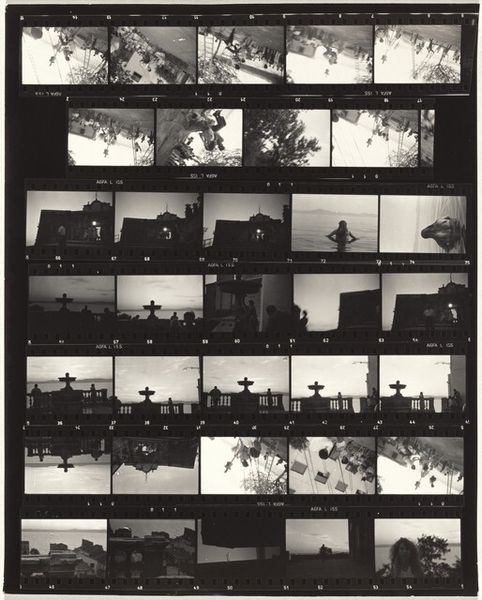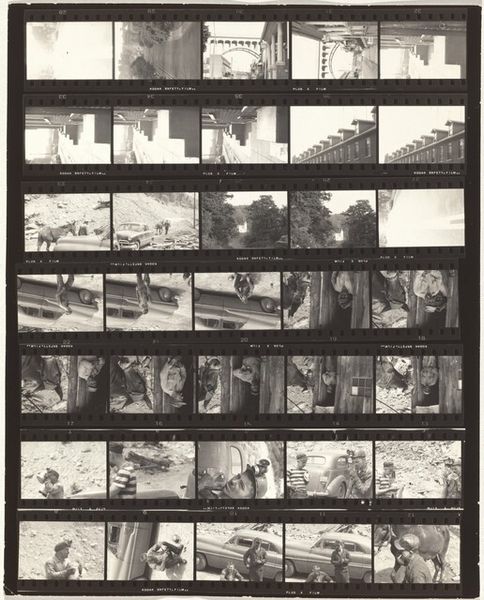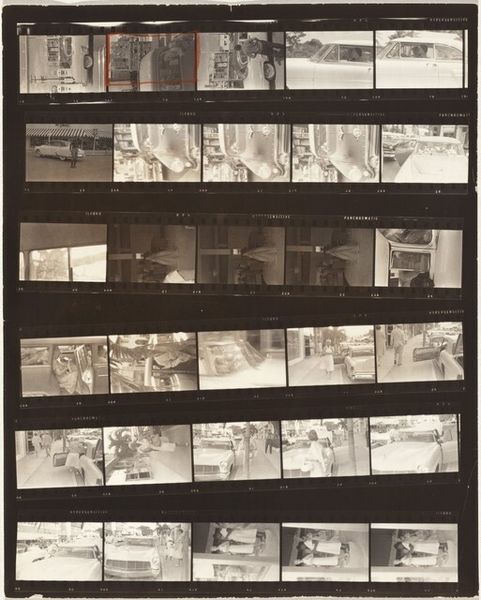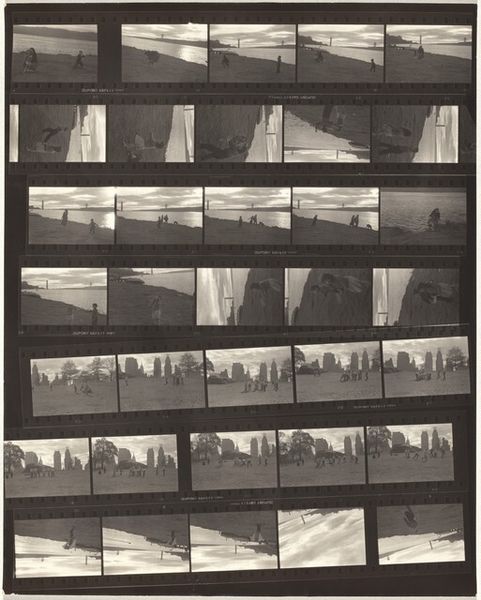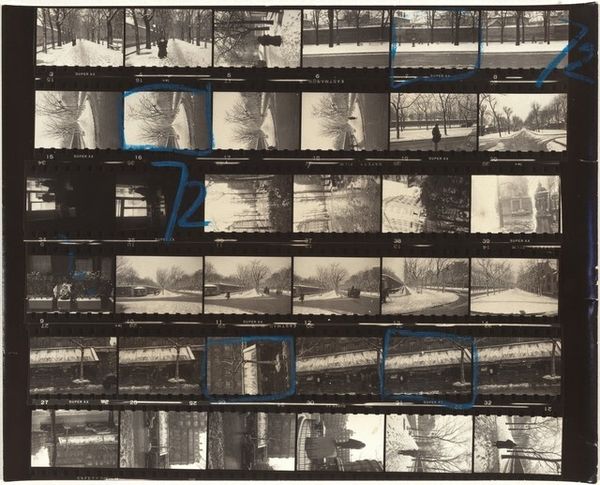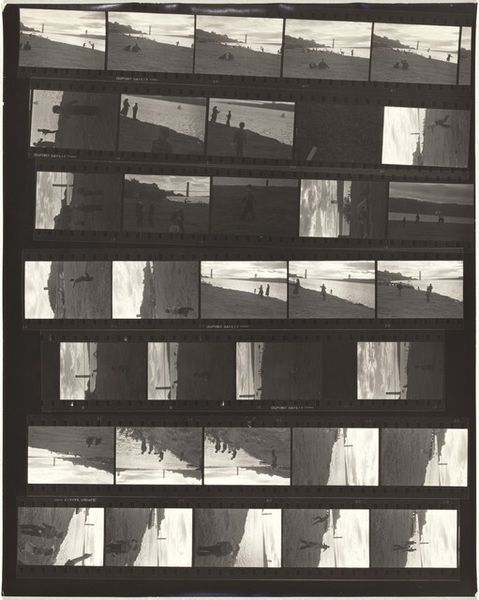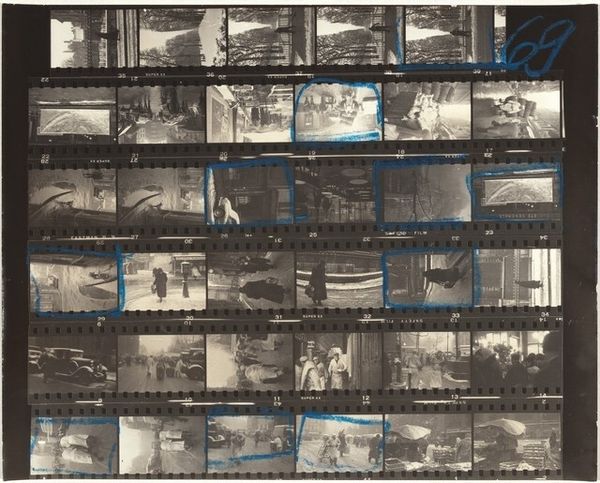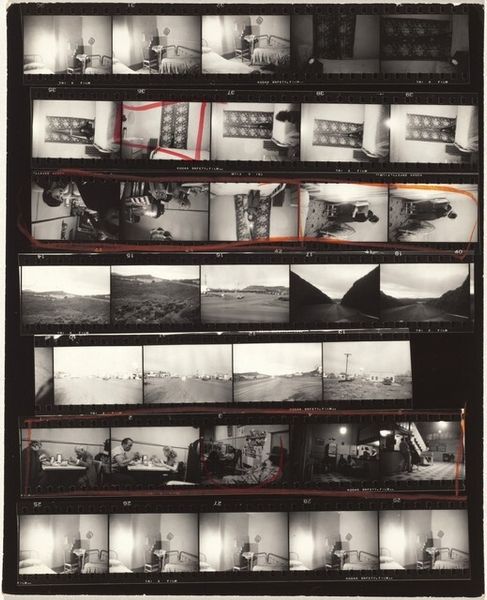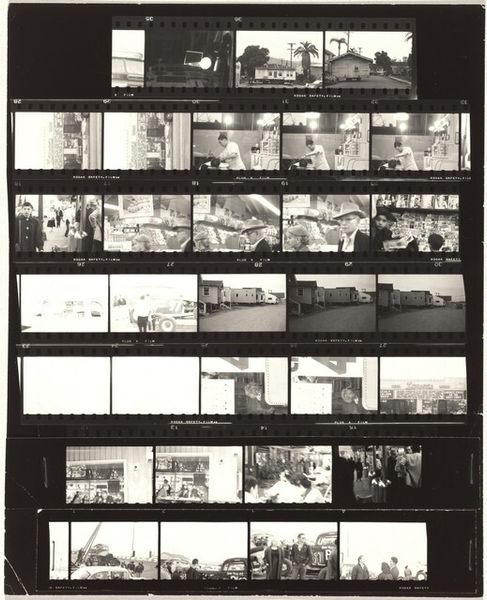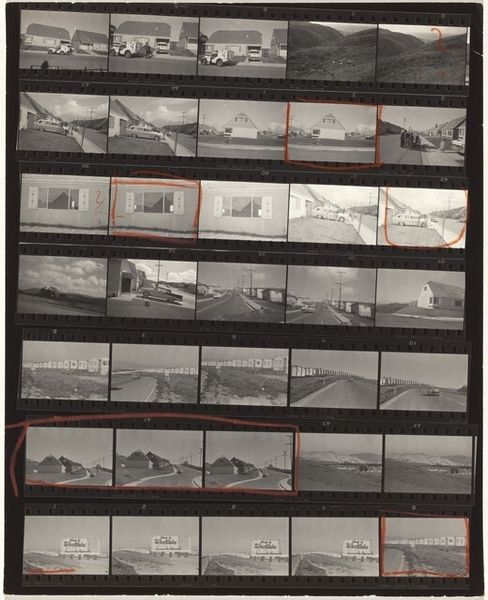
SV013/80, Inglewood, Centinela Park from Florence Boulevard 1980
0:00
0:00
photography
#
landscape
#
tonal
#
photography
#
geometric
#
cityscape
Dimensions: image (each): 3 × 4.5 cm (1 3/16 × 1 3/4 in.) sheet: 71.12 × 53.34 cm (28 × 21 in.)
Copyright: National Gallery of Art: CC0 1.0
Curator: Robbert Flick's "SV013/80, Inglewood, Centinela Park from Florence Boulevard," created in 1980, presents us with a gridded arrangement of photographic images. My first thought is the visual cadence of the panels - like individual frames from a roll of film, methodically cataloging views from a fixed perspective. What strikes you initially? Editor: It's the uniformity. The whole piece is monotone, but there's a certain kind of precision to this documentation, I get that. What's interesting is the kind of detached recording process itself. You see that seriality so common in process based works or post-studio approaches, how does the context, Centinela Park, influence the photographic process here? Curator: Well, this work falls squarely into the New Topographics movement, which questioned traditional landscape photography. The banality, almost, of the park is central. Flick is presenting a record, free of romanticism, about the urban sprawl around Los Angeles. It highlights how constructed nature becomes just another part of the built environment. Editor: It is this relationship that intrigues me – nature serving as another commodity. It also touches on production methods too – the mechanics of capturing so many of similar shots that have an overall flatness. What kind of labor underpinned this kind of documentation – to simply extract this view so many times feels deliberate and the repetition kind of calls back to ideas about artistic process that challenge the nature/culture binary here. Curator: Precisely! The very act of photographing and arranging in a grid highlights the constructedness of the image, as a deliberate product of artistic labor and perspective. In an effort to offer more objectivity, it shows you everything, and therefore, directs your view and exposes the pretense. It's also hard not to think about institutional settings for this kind of piece, like municipal archives for example – the grid becomes an objective form here, right? Editor: Absolutely. Thinking of it, its documentary effect also serves a consumerist end; a collection of neutral and purchasable moments of land. Very Southern California if you ask me. But, even without considering any of this, just the visual effect it gives – almost overwhelming, with a simple tonality. Curator: I agree. Flick presents a multifaceted portrait of space through repetition and a unique perspective. This systematic approach creates its own sort of sublime. Editor: It certainly gets under your skin with how procedural and measured everything is. A lot to take away and think about.
Comments
No comments
Be the first to comment and join the conversation on the ultimate creative platform.
